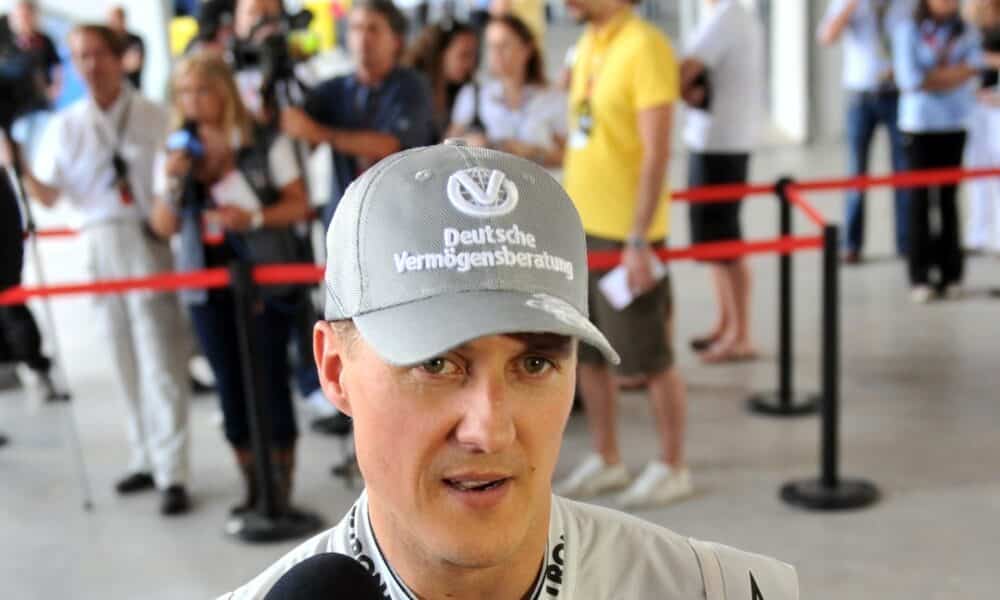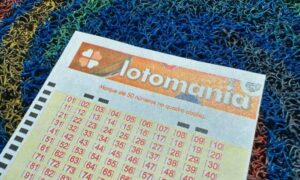Over twelve years have passed since Michael Schumacher, the seven-time Formula 1 world champion, suffered a life-altering accident while skiing in the French Alps. On December 29, 2013, in the Méribel resort, he struck his head on a rock, sustaining severe injuries that thrust him out of the public eye. His family, led by wife Corinna, has since maintained a near-impenetrable veil of privacy, sharing minimal details about the German icon’s condition. Yet, occasional glimpses—such as his reported presence at his daughter’s wedding—keep fans worldwide wondering about the man who redefined motorsport.
The accident occurred in an off-piste area between two slopes, known for its risks. Schumacher, an experienced skier wearing a helmet, hit a rock and was thrown ten meters, cracking his protective gear. The impact caused a traumatic brain injury, requiring immediate airlift to Grenoble hospital. There, he underwent two emergency surgeries and was placed in a medically induced coma. By April 2014, faint signs of consciousness emerged, leading to his transfer to Lausanne, Switzerland, and later to his home, where a private intensive care unit was established.
Privacy has been the family’s priority ever since. Corinna oversees Schumacher’s care, limiting access to a tight-knit group of medical staff, close friends like former FIA president Jean Todt, and select family members. This approach honors Schumacher’s preference for a low-profile life off the track, even during his glory days. The scarcity of updates fuels speculation but underscores the family’s commitment to shielding his dignity and legacy.
For me, Michael Schumacher is the coolest driver in the history of F1. pic.twitter.com/JQfQVU6hSG
— NikitaNickTur❤🤝🇸🇪&🇺🇲🇬🇧 (@Nicktur2403) April 10, 2025
A void in global motorsport
Schumacher’s career boasts staggering figures: seven world titles, 91 race wins, 68 pole positions, and 155 podiums. He dominated Formula 1 through the 1990s and 2000s, particularly with Ferrari, securing five consecutive championships from 2000 to 2004. His blend of skill and relentless drive made him a global icon. After retiring in 2006, he returned with Mercedes from 2010 to 2012. The 2013 accident, just a year after his second retirement, abruptly halted a life built on speed.
Beyond racing, Schumacher left a broader mark. As a UNESCO ambassador, he supported humanitarian causes, donating millions to charity. His love for competition extended to karting events and exhibition races. Since the accident, however, his public presence has vanished. The family’s decision to keep him out of the spotlight contrasts sharply with the constant exposure of his racing career.
The accident’s ripple effects touch those closest to him. His son, Mick Schumacher, pursued a racing career, winning the Formula 2 title in 2020 and competing in Formula 1 with Haas from 2021 to 2022. Now a Mercedes reserve driver, Mick has spoken sparingly about his father, but in a 2021 Netflix documentary, he shared a longing to discuss racing with him—a connection the accident severed. His daughter, Gina-Maria, excels in equestrian sports but similarly avoids public comments on her father’s health.
- Career highlights: Seven world titles, 91 grand prix victories, 68 poles.
- Humanitarian impact: Millions donated, UNESCO advocacy.
- Family legacy: Mick’s Formula 2 championship; Gina-Maria’s equestrian success.
Privacy under pressure
Safeguarding Schumacher’s privacy has proven challenging. In February 2025, three men were arrested for attempting to extort the family, demanding 15 million euros—over 95 million Brazilian reais at the time—to withhold 900 photos and 600 videos, including medical records. Authorities seized most of the material, but one hard drive remains missing, raising fears of potential leaks. The incident highlighted the family’s vulnerability to public scrutiny and strengthened Corinna’s resolve to control information.
Media speculation has also sparked friction. In 2019, reports surfaced about an experimental stem-cell treatment in Paris, led by doctor Philippe Menasche. The physician firmly denied conducting “miracle cures” or experiments, clarifying that his work focused on established medical practices. Such episodes illustrate the tension between public curiosity and the family’s right to discretion.
Rare insights come from trusted allies. Jean Todt, one of the few with regular access, has mentioned watching Formula 1 races alongside Schumacher. While he avoids specifics, his comments suggest the champion retains some link to the sport. In 2025, German journalist Felix Gorner reported that Schumacher relies entirely on caregivers and cannot speak, a detail that underscores the severity of his condition.
Innovative therapies and quiet hope
Efforts to improve Schumacher’s quality of life have included unconventional approaches. One involves playing engine sounds from a Mercedes-AMG car to stimulate cognitive functions, tapping into his deep connection to racing. While results remain unconfirmed, the strategy reflects a tailored effort to engage his memories and emotions. The family’s dedication to such initiatives speaks to their tireless commitment.
In 2019, Schumacher was admitted to a Paris hospital, prompting rumors of stem-cell therapy. No official confirmation followed, and the doctor involved dismissed speculative claims. These discreet endeavors highlight Corinna’s pursuit of options within the constraints of a complex medical reality, even as outcomes remain uncertain.
The Schumacher home in Lake Geneva, Switzerland, functions as a private medical facility. Equipped with an intensive care unit and staffed round-the-clock, it ensures comfort and security. Corinna’s management of this setup has earned praise for its precision, creating a sanctuary for the man who once thrilled millions on the track.
- Cognitive therapy: Engine sounds used to trigger memories.
- Medical setup: Home-based ICU with dedicated staff.
- Restricted access: Fewer than 20 people allowed to visit.
Fans left longing
Schumacher’s absence from racing and public life has left a void in motorsport. Fans cling to sparse updates, balancing hope with frustration over the lack of clarity. The 2021 Netflix documentary offered a rare window, with Corinna describing Michael as present but altered, and Mick mourning lost conversations. The film struck a chord, blending nostalgia with raw emotion.
Former colleagues feel the loss too. Jean Todt, a key figure from Schumacher’s Ferrari days, remains a steadfast supporter, offering glimpses of their bond. In 2021, Ferrari vice-president Pietro Ferrari noted that Schumacher cannot speak but is alive, countering narratives that diminish his presence. These voices provide faint connections to a figure now largely unseen.
In 2024, reports emerged that Schumacher attended Gina-Maria’s wedding in Majorca. Held at a family-owned villa, the event banned cell phones to ensure privacy. Published by German media, the story lacked photos or official confirmation but stirred optimism among fans, suggesting a moment of family unity.
A legacy beyond the track
Schumacher’s story is one of triumph and tragedy. From karting at age four, guided by his father Rolf, he rose from humble roots to global stardom. His Formula 1 journey—spanning Jordan, Benetton, Ferrari, and Mercedes—inspired generations. Even after retiring, he stayed engaged, mentoring young drivers and competing recreationally.
The accident reshaped that narrative. Corinna, married to Michael since 1995, has become the cornerstone of his care, managing a life far removed from the spotlight. Mick and Gina-Maria carry the family name forward—Mick in racing, Gina in equestrianism—while navigating their father’s towering legacy. Gina’s choice to drop the Schumacher surname after marriage sparked curiosity but was seen as a step toward independence.
Legal battles have also marked the family’s efforts. Beyond the 2025 extortion case, a 2016 lawsuit against a German magazine addressed false health claims. These fights reflect a broader mission to protect Schumacher’s privacy against relentless intrusion.
Fleeting moments of connection
Despite his seclusion, hints suggest Schumacher remains tied to his past. Reports describe drives in sports cars, with engine roars aimed at sparking memories. Jean Todt’s 2019 remark about watching races together paints a picture of quiet companionship, rooted in their shared history.
These efforts carry emotional weight. Mick’s reflections reveal the pain of a son unable to share his achievements with his father. Gina, meanwhile, channels her energy into equestrianism, a world apart from racing but shaped by the same discipline Schumacher embodied. The family’s focus on sensory therapies shows a creative bid to keep him engaged, even if progress is slow.
The 2024 wedding report, though unverified, resonated deeply. It suggested Schumacher could still share in family milestones, however privately. Such moments, rare as they are, fuel hope among those who remember his dominance on the track.
- Sensory engagement: Sports car drives to evoke racing memories.
- Family devotion: Corinna’s unwavering oversight of care.
- Symbolic presence: Reported attendance at Gina-Maria’s wedding.
Milestones in Schumacher’s recovery
Key moments have defined Schumacher’s journey since the accident:
- December 2013: Ski accident in Méribel causes severe brain injury.
- April 2014: First signs of consciousness after coma.
- June 2014: Transfer to Lausanne, then home for ongoing care.
- September 2019: Paris hospital visit sparks treatment rumors.
- February 2025: Three arrested for extortion attempt on family.
An enduring icon’s impact
Schumacher’s influence on motorsport remains unmatched. His records stood as benchmarks until Lewis Hamilton matched his seven titles in 2020, often citing Schumacher as an inspiration. Rivalries with Ayrton Senna, Alain Prost, and Mika Häkkinen defined Formula 1’s golden era, with victories at Monaco, Spa, and Monza etched in history.
Corinna, who met Michael in 1991, anchors the family’s efforts. Her role, described by friend Eddie Jordan as akin to a prisoner’s due to its demands, reflects profound sacrifice. Mick and Gina, meanwhile, forge their paths under the weight of their father’s legacy, balancing pride with privacy.
The sport moves on, with drivers like Max Verstappen and Lando Norris pushing boundaries Schumacher helped shape. His influence lingers in car design, team strategies, and the pursuit of excellence. Even in absence, he remains a touchstone for the racing world.
A future cloaked in shadow
Today, Schumacher lives far from public view, cared for in a tailored environment. The family’s choice to shield him preserves his dignity but leaves fans yearning for more. His story unfolds in fragments—through friends’ words, family efforts, and fleeting reports of his presence.
Motorsport evolves, but Schumacher’s shadow looms large. His triumphs and trials remind us of life’s fragility and resilience. As the world watches from afar, his legacy endures, a testament to a man who conquered tracks and continues to inspire in silence.

Over twelve years have passed since Michael Schumacher, the seven-time Formula 1 world champion, suffered a life-altering accident while skiing in the French Alps. On December 29, 2013, in the Méribel resort, he struck his head on a rock, sustaining severe injuries that thrust him out of the public eye. His family, led by wife Corinna, has since maintained a near-impenetrable veil of privacy, sharing minimal details about the German icon’s condition. Yet, occasional glimpses—such as his reported presence at his daughter’s wedding—keep fans worldwide wondering about the man who redefined motorsport.
The accident occurred in an off-piste area between two slopes, known for its risks. Schumacher, an experienced skier wearing a helmet, hit a rock and was thrown ten meters, cracking his protective gear. The impact caused a traumatic brain injury, requiring immediate airlift to Grenoble hospital. There, he underwent two emergency surgeries and was placed in a medically induced coma. By April 2014, faint signs of consciousness emerged, leading to his transfer to Lausanne, Switzerland, and later to his home, where a private intensive care unit was established.
Privacy has been the family’s priority ever since. Corinna oversees Schumacher’s care, limiting access to a tight-knit group of medical staff, close friends like former FIA president Jean Todt, and select family members. This approach honors Schumacher’s preference for a low-profile life off the track, even during his glory days. The scarcity of updates fuels speculation but underscores the family’s commitment to shielding his dignity and legacy.
For me, Michael Schumacher is the coolest driver in the history of F1. pic.twitter.com/JQfQVU6hSG
— NikitaNickTur❤🤝🇸🇪&🇺🇲🇬🇧 (@Nicktur2403) April 10, 2025
A void in global motorsport
Schumacher’s career boasts staggering figures: seven world titles, 91 race wins, 68 pole positions, and 155 podiums. He dominated Formula 1 through the 1990s and 2000s, particularly with Ferrari, securing five consecutive championships from 2000 to 2004. His blend of skill and relentless drive made him a global icon. After retiring in 2006, he returned with Mercedes from 2010 to 2012. The 2013 accident, just a year after his second retirement, abruptly halted a life built on speed.
Beyond racing, Schumacher left a broader mark. As a UNESCO ambassador, he supported humanitarian causes, donating millions to charity. His love for competition extended to karting events and exhibition races. Since the accident, however, his public presence has vanished. The family’s decision to keep him out of the spotlight contrasts sharply with the constant exposure of his racing career.
The accident’s ripple effects touch those closest to him. His son, Mick Schumacher, pursued a racing career, winning the Formula 2 title in 2020 and competing in Formula 1 with Haas from 2021 to 2022. Now a Mercedes reserve driver, Mick has spoken sparingly about his father, but in a 2021 Netflix documentary, he shared a longing to discuss racing with him—a connection the accident severed. His daughter, Gina-Maria, excels in equestrian sports but similarly avoids public comments on her father’s health.
- Career highlights: Seven world titles, 91 grand prix victories, 68 poles.
- Humanitarian impact: Millions donated, UNESCO advocacy.
- Family legacy: Mick’s Formula 2 championship; Gina-Maria’s equestrian success.
Privacy under pressure
Safeguarding Schumacher’s privacy has proven challenging. In February 2025, three men were arrested for attempting to extort the family, demanding 15 million euros—over 95 million Brazilian reais at the time—to withhold 900 photos and 600 videos, including medical records. Authorities seized most of the material, but one hard drive remains missing, raising fears of potential leaks. The incident highlighted the family’s vulnerability to public scrutiny and strengthened Corinna’s resolve to control information.
Media speculation has also sparked friction. In 2019, reports surfaced about an experimental stem-cell treatment in Paris, led by doctor Philippe Menasche. The physician firmly denied conducting “miracle cures” or experiments, clarifying that his work focused on established medical practices. Such episodes illustrate the tension between public curiosity and the family’s right to discretion.
Rare insights come from trusted allies. Jean Todt, one of the few with regular access, has mentioned watching Formula 1 races alongside Schumacher. While he avoids specifics, his comments suggest the champion retains some link to the sport. In 2025, German journalist Felix Gorner reported that Schumacher relies entirely on caregivers and cannot speak, a detail that underscores the severity of his condition.
Innovative therapies and quiet hope
Efforts to improve Schumacher’s quality of life have included unconventional approaches. One involves playing engine sounds from a Mercedes-AMG car to stimulate cognitive functions, tapping into his deep connection to racing. While results remain unconfirmed, the strategy reflects a tailored effort to engage his memories and emotions. The family’s dedication to such initiatives speaks to their tireless commitment.
In 2019, Schumacher was admitted to a Paris hospital, prompting rumors of stem-cell therapy. No official confirmation followed, and the doctor involved dismissed speculative claims. These discreet endeavors highlight Corinna’s pursuit of options within the constraints of a complex medical reality, even as outcomes remain uncertain.
The Schumacher home in Lake Geneva, Switzerland, functions as a private medical facility. Equipped with an intensive care unit and staffed round-the-clock, it ensures comfort and security. Corinna’s management of this setup has earned praise for its precision, creating a sanctuary for the man who once thrilled millions on the track.
- Cognitive therapy: Engine sounds used to trigger memories.
- Medical setup: Home-based ICU with dedicated staff.
- Restricted access: Fewer than 20 people allowed to visit.
Fans left longing
Schumacher’s absence from racing and public life has left a void in motorsport. Fans cling to sparse updates, balancing hope with frustration over the lack of clarity. The 2021 Netflix documentary offered a rare window, with Corinna describing Michael as present but altered, and Mick mourning lost conversations. The film struck a chord, blending nostalgia with raw emotion.
Former colleagues feel the loss too. Jean Todt, a key figure from Schumacher’s Ferrari days, remains a steadfast supporter, offering glimpses of their bond. In 2021, Ferrari vice-president Pietro Ferrari noted that Schumacher cannot speak but is alive, countering narratives that diminish his presence. These voices provide faint connections to a figure now largely unseen.
In 2024, reports emerged that Schumacher attended Gina-Maria’s wedding in Majorca. Held at a family-owned villa, the event banned cell phones to ensure privacy. Published by German media, the story lacked photos or official confirmation but stirred optimism among fans, suggesting a moment of family unity.
A legacy beyond the track
Schumacher’s story is one of triumph and tragedy. From karting at age four, guided by his father Rolf, he rose from humble roots to global stardom. His Formula 1 journey—spanning Jordan, Benetton, Ferrari, and Mercedes—inspired generations. Even after retiring, he stayed engaged, mentoring young drivers and competing recreationally.
The accident reshaped that narrative. Corinna, married to Michael since 1995, has become the cornerstone of his care, managing a life far removed from the spotlight. Mick and Gina-Maria carry the family name forward—Mick in racing, Gina in equestrianism—while navigating their father’s towering legacy. Gina’s choice to drop the Schumacher surname after marriage sparked curiosity but was seen as a step toward independence.
Legal battles have also marked the family’s efforts. Beyond the 2025 extortion case, a 2016 lawsuit against a German magazine addressed false health claims. These fights reflect a broader mission to protect Schumacher’s privacy against relentless intrusion.
Fleeting moments of connection
Despite his seclusion, hints suggest Schumacher remains tied to his past. Reports describe drives in sports cars, with engine roars aimed at sparking memories. Jean Todt’s 2019 remark about watching races together paints a picture of quiet companionship, rooted in their shared history.
These efforts carry emotional weight. Mick’s reflections reveal the pain of a son unable to share his achievements with his father. Gina, meanwhile, channels her energy into equestrianism, a world apart from racing but shaped by the same discipline Schumacher embodied. The family’s focus on sensory therapies shows a creative bid to keep him engaged, even if progress is slow.
The 2024 wedding report, though unverified, resonated deeply. It suggested Schumacher could still share in family milestones, however privately. Such moments, rare as they are, fuel hope among those who remember his dominance on the track.
- Sensory engagement: Sports car drives to evoke racing memories.
- Family devotion: Corinna’s unwavering oversight of care.
- Symbolic presence: Reported attendance at Gina-Maria’s wedding.
Milestones in Schumacher’s recovery
Key moments have defined Schumacher’s journey since the accident:
- December 2013: Ski accident in Méribel causes severe brain injury.
- April 2014: First signs of consciousness after coma.
- June 2014: Transfer to Lausanne, then home for ongoing care.
- September 2019: Paris hospital visit sparks treatment rumors.
- February 2025: Three arrested for extortion attempt on family.
An enduring icon’s impact
Schumacher’s influence on motorsport remains unmatched. His records stood as benchmarks until Lewis Hamilton matched his seven titles in 2020, often citing Schumacher as an inspiration. Rivalries with Ayrton Senna, Alain Prost, and Mika Häkkinen defined Formula 1’s golden era, with victories at Monaco, Spa, and Monza etched in history.
Corinna, who met Michael in 1991, anchors the family’s efforts. Her role, described by friend Eddie Jordan as akin to a prisoner’s due to its demands, reflects profound sacrifice. Mick and Gina, meanwhile, forge their paths under the weight of their father’s legacy, balancing pride with privacy.
The sport moves on, with drivers like Max Verstappen and Lando Norris pushing boundaries Schumacher helped shape. His influence lingers in car design, team strategies, and the pursuit of excellence. Even in absence, he remains a touchstone for the racing world.
A future cloaked in shadow
Today, Schumacher lives far from public view, cared for in a tailored environment. The family’s choice to shield him preserves his dignity but leaves fans yearning for more. His story unfolds in fragments—through friends’ words, family efforts, and fleeting reports of his presence.
Motorsport evolves, but Schumacher’s shadow looms large. His triumphs and trials remind us of life’s fragility and resilience. As the world watches from afar, his legacy endures, a testament to a man who conquered tracks and continues to inspire in silence.







